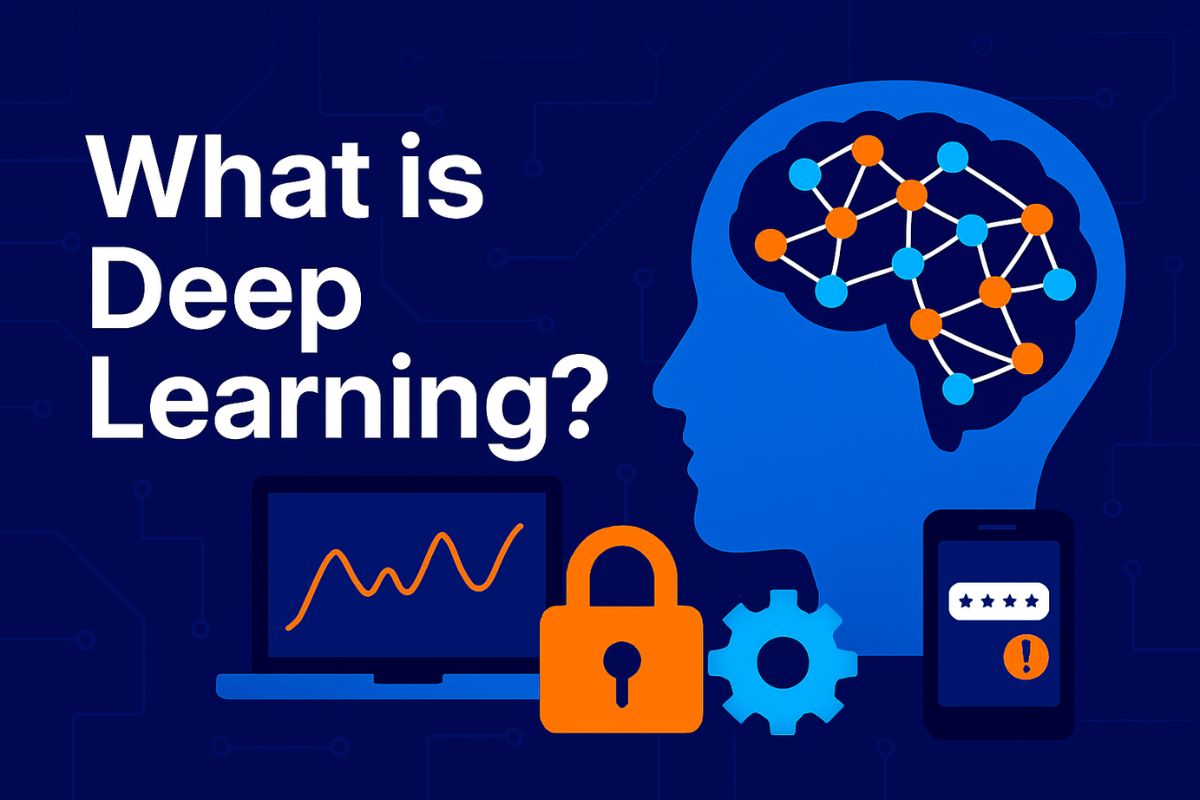Deep Learning is a powerful subset of machine learning that uses neural networks to model complex patterns in data. It powers many modern AI applications like image recognition, speech processing, and autonomous systems. This guide covers how deep learning works, key architectures, global and India-specific applications, challenges, career options, and resources to learn in 2025.
Imagine a world where machines can recognize faces, understand spoken commands, translate languages in real time, and even drive cars autonomously. This is not science fiction — it’s the power of Deep Learning at work. Deep learning is a specialized branch of artificial intelligence (AI) and machine learning that enables computers to learn from vast amounts of data and perform complex tasks without explicit programming.
For students, professionals, and enthusiasts in India and around the world, understanding deep learning is essential as it drives innovation across industries like healthcare, finance, automotive, and education. In this comprehensive guide, we will explore the fundamentals of deep learning, popular architectures, practical applications, challenges, career pathways, and how to start learning this exciting technology.
How Does Deep Learning Work?
Deep learning models are inspired by the human brain and use structures called artificial neural networks to simulate how neurons work together to process information.
Neural Networks: The Building Blocks
- Input Layer: Receives raw data such as images, text, or sound.
- Hidden Layers: Multiple layers where data is transformed through weighted connections and activation functions, extracting features and patterns.
- Output Layer: Produces the final prediction or classification based on the processed data.
Training these networks involves feeding large datasets and adjusting weights through a process called backpropagation to minimize errors. The availability of powerful hardware like GPUs (Graphics Processing Units) and TPUs (Tensor Processing Units) has accelerated deep learning breakthroughs.
Popular Deep Learning Architectures
Convolutional Neural Networks (CNNs)
Ideal for image and video analysis by detecting spatial hierarchies.
Recurrent Neural Networks (RNNs)
Designed for sequential data like speech and language by maintaining context.
Long Short-Term Memory Networks (LSTMs)
A type of RNN that better captures long-range dependencies in sequences.
Transformers
State-of-the-art models like BERT and GPT that excel in natural language understanding and generation.
Applications of Deep Learning
Global Use Cases
- Image and Speech Recognition: Facial recognition, voice assistants.
- Autonomous Vehicles: Self-driving cars that interpret surroundings.
- Natural Language Processing (NLP): Chatbots, translation, sentiment analysis.
- Healthcare Diagnostics: Analyzing medical images and predicting diseases.
India-Specific Use Cases
| Sector | Example & Description |
|---|---|
| Agriculture | Detecting crop diseases early using image analysis with deep learning. |
| Finance | Fraud detection, credit scoring, and algorithmic trading using AI models. |
| Education | Personalized AI tutors and automated grading systems. |
| Healthcare | Medical image diagnostics and patient data analysis. |
Benefits of Deep Learning
- High Accuracy: Learns complex patterns from large datasets.
- Automation: Reduces human effort in repetitive tasks.
- Continuous Improvement: Models improve with more data and training.
- Wide Applicability: Used in diverse fields from autonomous driving to language translation.
Challenges of Deep Learning
| Challenge | Description |
|---|---|
| Data Requirements | Requires massive labeled datasets for training accurate models. |
| Computational Cost | High energy and hardware costs due to intensive processing. |
| Interpretability | Difficult to explain how models arrive at decisions (“black box”). |
| Overfitting | Risk of models performing well on training data but poorly in real scenarios. |
Popular Deep Learning Frameworks (2025)
| Framework | Key Features | Use Cases | License |
|---|---|---|---|
| TensorFlow | Scalable, supports production | Research, production | Apache 2.0 |
| PyTorch | Flexible, research-friendly | Prototyping, NLP, vision | BSD |
| Keras | User-friendly API | Rapid prototyping | MIT |
| MXNet | Efficient, cloud-focused | Scalable applications | Apache 2.0 |
Career Opportunities in Deep Learning
- Deep Learning Engineer: Building and optimizing neural networks.
- AI Research Scientist: Innovating new algorithms and models.
- Data Scientist: Applying deep learning in data analysis.
- Computer Vision Specialist: Working on image and video processing.
- NLP Engineer: Developing language models and chatbots.
Salary Insights
| Role | Avg Salary in India (₹/year) | Avg Salary Globally (USD/year) |
|---|---|---|
| Deep Learning Engineer | ₹8–18 LPA | $100K–150K |
| AI Research Scientist | ₹10–25 LPA | $110K–160K |
| Data Scientist | ₹6–14 LPA | $80K–130K |
How to Learn Deep Learning
Recommended Skills
- Programming in Python
- Mathematics: Linear Algebra, Calculus, Probability
- Machine Learning basics
- Familiarity with deep learning frameworks: TensorFlow, PyTorch
Learning Resources
- Coursera – Deep Learning Specialization
- Udacity – Deep Learning Nanodegree
- fast.ai – Practical Deep Learning for Coders
Practice
- Participate in Kaggle competitions
- Build projects like image classifiers and chatbots
- Contribute to open-source AI projects
FAQs
1. What is Deep Learning?
Deep learning is a subset of machine learning that uses neural networks with multiple layers to model complex patterns in data.
2. How is Deep Learning different from Machine Learning?
Machine learning includes various algorithms; deep learning specifically uses neural networks with many layers.
3. What are common applications of Deep Learning?
Applications include image recognition, speech processing, autonomous vehicles, and language translation.
4. Is Deep Learning difficult to learn?
It requires knowledge of programming and math but is approachable with dedication and practice.
5. What programming languages are used in Deep Learning?
Python is the most popular, supported by frameworks like TensorFlow and PyTorch.
6. What hardware is needed for Deep Learning?
GPUs or TPUs are recommended to speed up training.
7. What are future trends in Deep Learning?
Better model interpretability, energy-efficient architectures, and broader adoption across industries.



